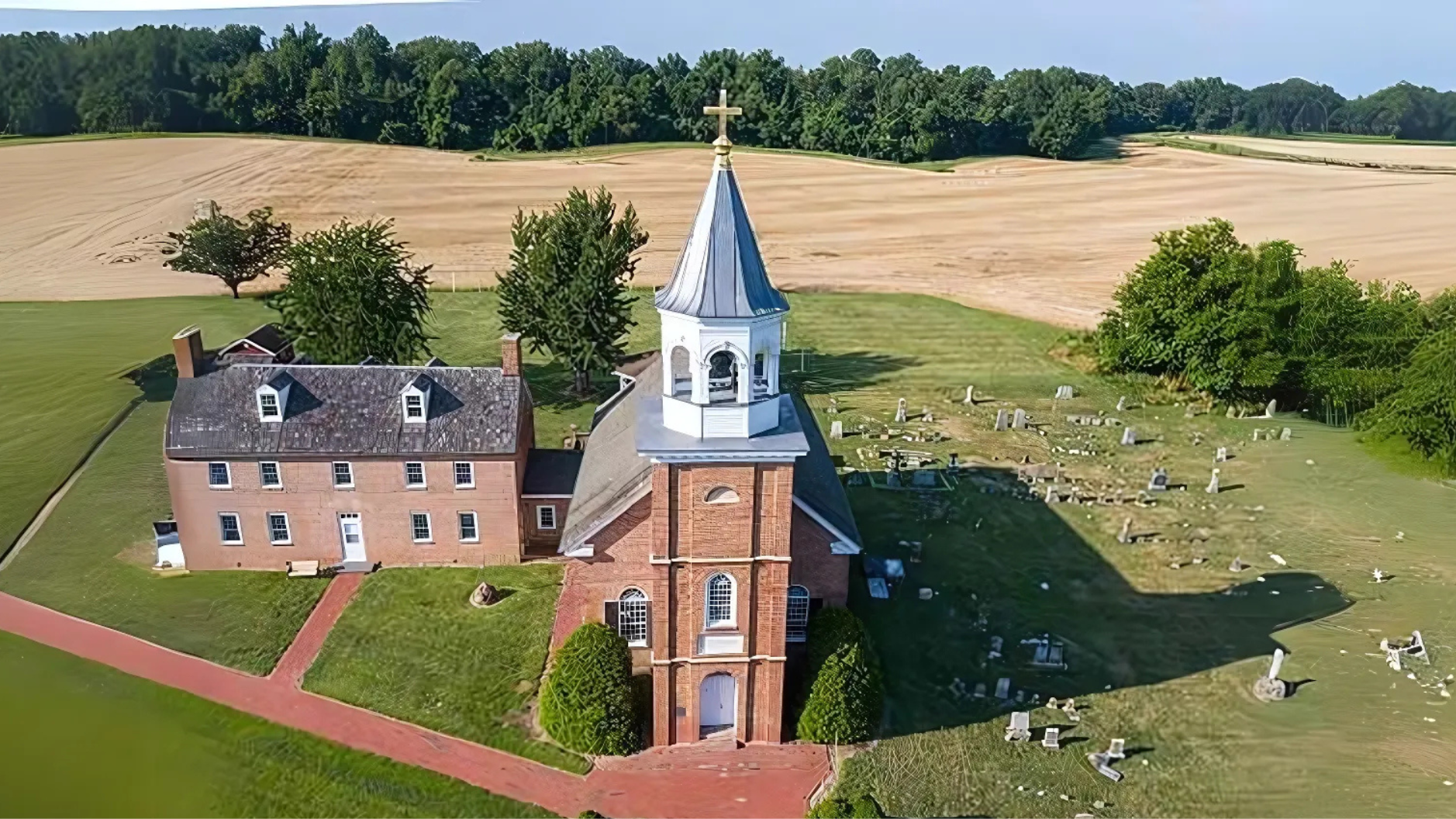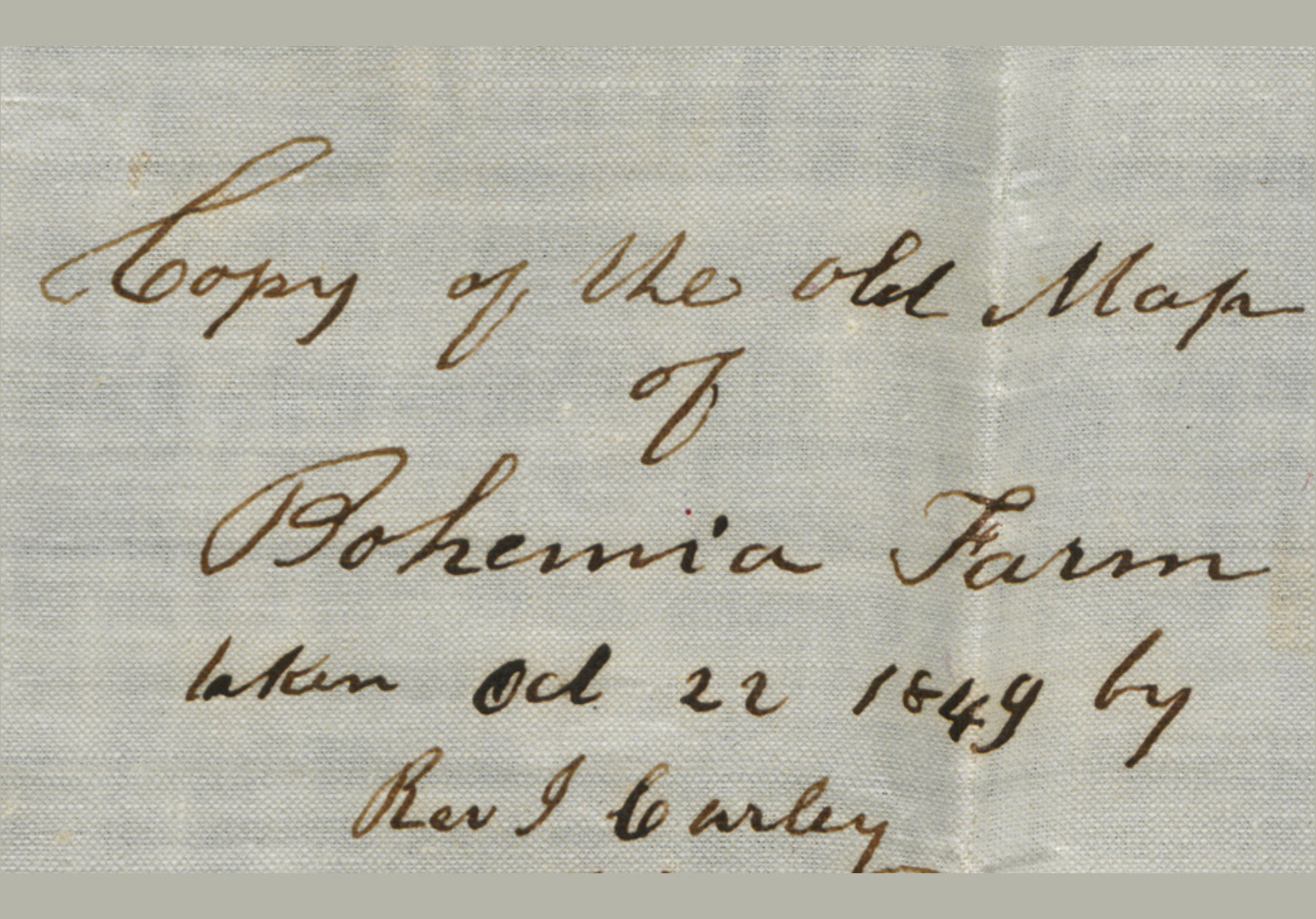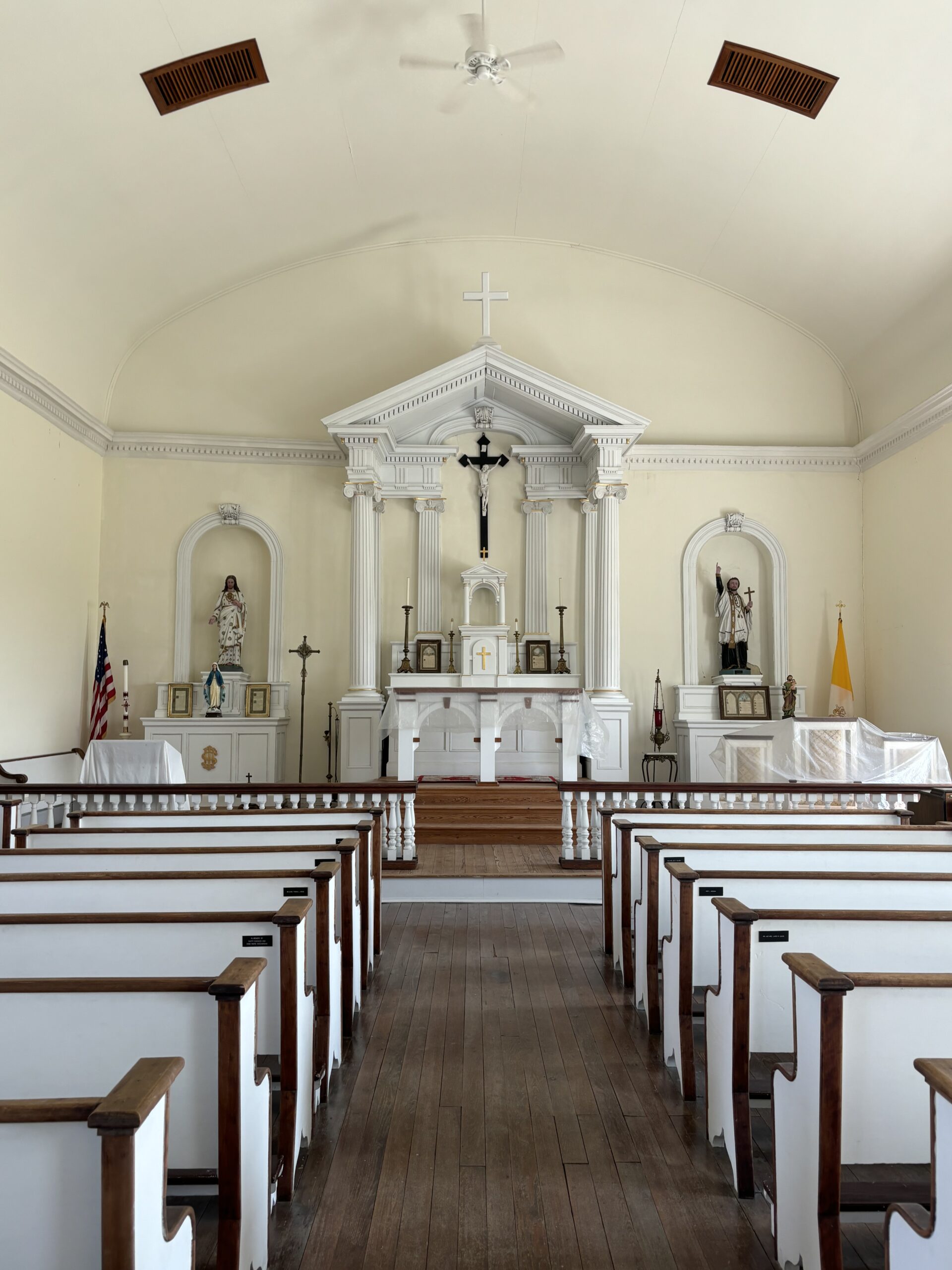
Old Bohemia Historical Society
The Old Bohemia Historical Society preserves and shares the history of one of the earliest Roman Catholic missions in America. Located in Warwick, Maryland, St. Francis Xavier Shrine, farmhouse, barns, museum, and the scenic landscape itself bear witness to a chapter of American history that receives little attention.
We share the story of early Americans whose strength, perseverance, and faith established the Catholic Church in the Mid-Atlantic in the 17th century and nurtured the church’s growth through the 20th century.
A Brief History of the Bohemia Mission
Maryland was founded in 1632 as a haven for Catholics facing persecution in England. By 1692, however, rising anti-Catholic sentiment led to the Protestant Revolution. Maryland Protestants passed laws banning Catholic worship, education, and even relinquished Catholics’ right to vote or hold public office. As a result, Catholics worshipped in secret for 84 years–from 1692 to 1776. Soon after the Revolutionary War began, Maryland’s colonial government collapsed and the Patriot-led government influenced the revision of the state constitution to make religious freedom the law once again.
To learn more about this era in American history, see The Religious Practice of Maryand’s First Catholics.


St. Francis Xavier mission was founded by Jesuit priests in 1704 on a farm purchased from the owners of Bohemia Manor. Jesuit priests are members of the Society of Jesus, one of the largest male religious orders in the Roman Catholic Church. St. Francis Xavier Shrine is one of the earliest Catholic churches established in the British colonies. The parishioners persevered through decades of religious suppression and the church remains a powerful symbol of early American religious history.
Fr. Thomas Mansell, S.J. and Fr. William Douglass, S.J. served the Catholic community and managed the work of enslaved individuals who harvested tobacco, vegetables, and fruit; tended to livestock; made bricks; and constructed buildings. Income from the the products created by enslaved individuals supported the priests’ day-to-day expenses, plus travel to private homes to say Mass and deliver the sacraments. Known in the community only as Misters Mansell and Douglass, the priests disguised themselves as plantation managers in order to continue ministering to Catholics throughout the Delmarva Peninsula without drawing attention to their religious activities, which were against state law.
Relying on the labor of hundreds of enslaved men, women, and children across six plantations on the Eastern Shore, the Society of Jesus was among the largest slaveholders in 18th-century Maryland. The Bohemia Manor plantation included a water-powered gristmill, a sawmill, a kiln for brick-making, carpenter and blacksmith shops, an ice house, several barns, living quarters, and a loading dock on the Bohemia River that runs through the property.
The priests kept diaries and detailed records of the names of enslaved individuals’ baptisms, sacraments, deaths, and the work that they did. The painful legacy of Jesuit slaveholding has prompted contemporary efforts to address this tragedy, acknowledge the full history, and reach out to descendants of enslaved individuals. To learn more, see the Georgetown University Archives, the Jesuit Plantation Project, and the Descendants Truth & Reconciliation Foundation.
To learn more about the Old Bohemia Historical Society today and the church restoration project, see this 2024 Catholic Forum Video Interview.
Stewardship
For more than 70 years, hundreds of members of the Old Bohemia Historical Society have lovingly cared for the church, farmhouse, rectory, museum, barns, and acres of surrounding natural landscape.
